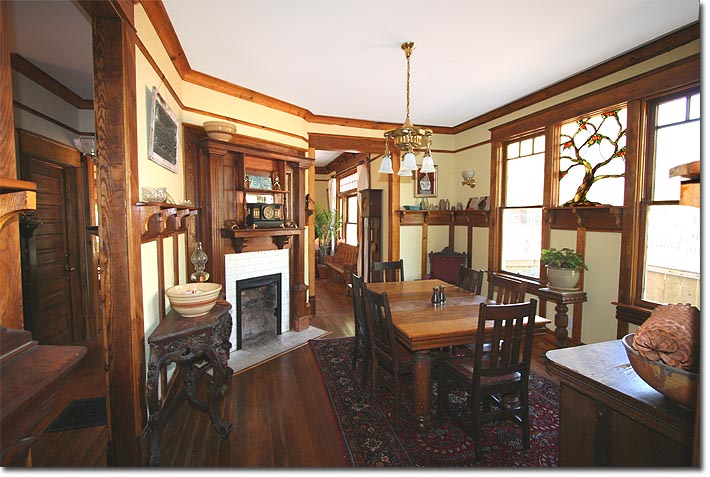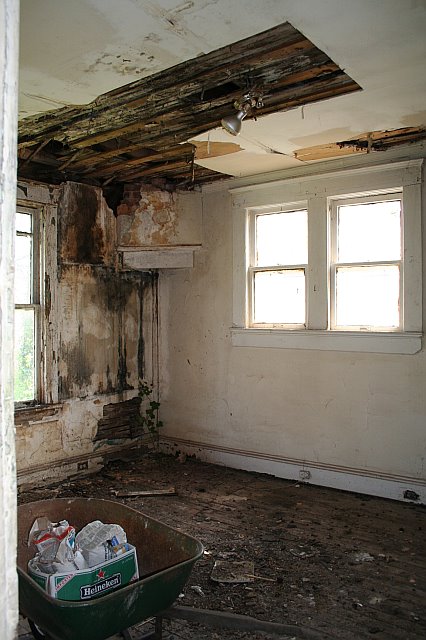 S
S everal of my most enjoyable renovation projects were houses that were totally violated: everything worth anything ripped clean out of them. In fact, I live in one of those houses now so I’ll talk about this one. We bought this house after watching it sit vacant for 7 years–of course, that’s not counting the occasional crack-head drifter, the squirrels that made a home in the roof rafters, the rats in the basement, or the various termites and powder-post beetles enjoying the buffet of wet wood. Add to that, the bungalow had been chopped, diced and sliced into a triplex, with no concern for existing doors and mantels. As you can envision, the house was not a jewel. But I wasn’t going to talk about the massive structural work that we put into the house, the veritable rebuilding of the floor joists or the reframing of the roof-line and staircase, the new CMU piers or exterior foundation walls, or the huge quantities of laminated beams that we inserted into crucial places to keep the house erect and standing proud. And I am not going to talk about the damage that water can do as it pours through gaping holes in the roof or runs into window sills and then down into major beams that were once trees. Just take my word that the house has a brand new skeleton with a few historic beams, joists, and studs.
everal of my most enjoyable renovation projects were houses that were totally violated: everything worth anything ripped clean out of them. In fact, I live in one of those houses now so I’ll talk about this one. We bought this house after watching it sit vacant for 7 years–of course, that’s not counting the occasional crack-head drifter, the squirrels that made a home in the roof rafters, the rats in the basement, or the various termites and powder-post beetles enjoying the buffet of wet wood. Add to that, the bungalow had been chopped, diced and sliced into a triplex, with no concern for existing doors and mantels. As you can envision, the house was not a jewel. But I wasn’t going to talk about the massive structural work that we put into the house, the veritable rebuilding of the floor joists or the reframing of the roof-line and staircase, the new CMU piers or exterior foundation walls, or the huge quantities of laminated beams that we inserted into crucial places to keep the house erect and standing proud. And I am not going to talk about the damage that water can do as it pours through gaping holes in the roof or runs into window sills and then down into major beams that were once trees. Just take my word that the house has a brand new skeleton with a few historic beams, joists, and studs.
But, I wanted to discuss the pretty stuff, the finish details that make old house people smile when they walk into a restored old house where the woodwork gleams, the tiles show off their crackled age, and the red-hued heart pine floors evoke sentiment and warmth.
Our house was missing all of this, so we decided to give it an infusion. Luckily, we are perfectly equipped to do this with a basement filled with salvaged parts and pieces. That still doesn’t mean it’s easy or simple to do. It’s an enormous puzzle that you can walk through, but if you enjoy creating art or puzzles or both, it’s a highly rewarding challenge.
Some folks tackle this upfront by making all of their decisions from the get-go so that they don’t slow down their builder or renovator. And it’s safe to say that and most people likely only use a select few salvage pieces as accents, which give their new construction or renovation a warmth and connection to history. We decided that since we own the renovation company that we would only be slowing ourselves down and that an organic process of choosing parts could be tackled with each impending deadline.
I’ll talk more about this in upcoming posts and the process that drove each selection.



